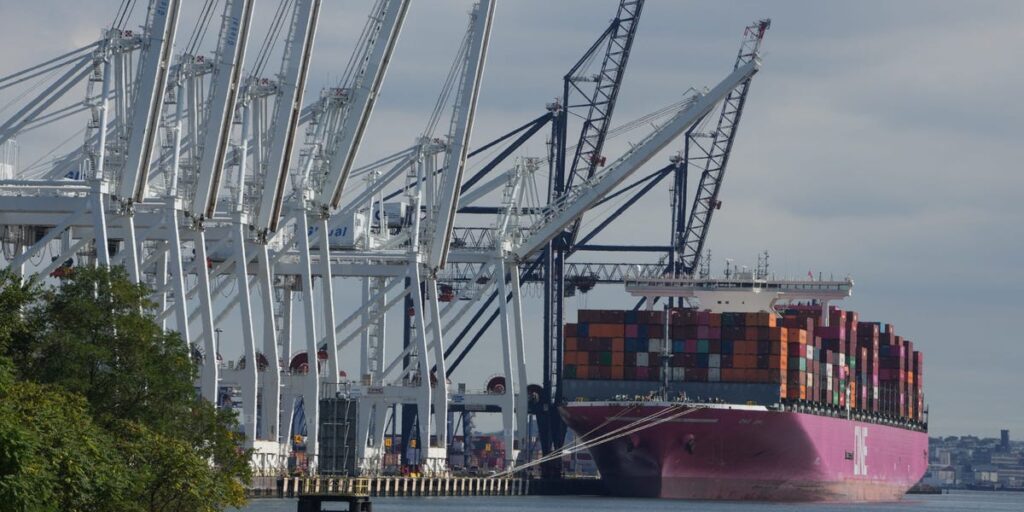- The dockworkers strike is having an immediate effect on the flow of goods through Eastern US ports.
- Ship tracking data show a growing number of vessels sitting at anchor near closed facilities.
- Experts tell BI the impact of the backlog will reverberate long after an agreement is reached.
For the first time in nearly 50 years, international maritime trade has come to a standstill in the Eastern US.
As the International Longshoreman’s Association strike heads into a third day, the stoppage is already having an immediate effect on the flow of goods through East and Gulf Coast ports.
At least 38 container vessels were backed up at US ports on Tuesday, the first day of the strike, up from three on the preceding Sunday, Reuters reported, citing Everstream Analytics data.
A Business Insider review of ship tracking data shows a growing number of cargo vessels and tankers at anchor near closed facilities, including New York, Virginia Beach, Savannah, Miami, New Orleans, and Houston.
Each one of those ships represents a company losing money, according to Pace University professor Andrew Coggins.
“The whole business model of the container shipping industry is to spend as little time in port as possible,” he told Business Insider.
“The ship makes money when it’s sailing from A to B,” he added, saying that some vessels are likely adjusting their speeds in order to delay their arrival as long as possible, so as not to sit idly at anchor.
But even if the strike were to end tomorrow — which is extremely unlikely — a new problem emerges: dock space.
Ports only have a limited amount of square footage upon which to stack and store containers, and once that capacity is full, things start to unravel quickly.
A working port is an intricate dance of trucks, cranes, and ships, all coordinating to exchange outbound containers for inbound ones.
Stopping that flow even for a single day creates all manner of headaches, ranging from spoiled produce to cancelled journeys, Coggins said.
Burt Flickinger, managing director at retail consulting firm Strategic Resource Group, said only about 8-12 ships ordinarily are in a port’s queue at any time, and those are typically turned around in a matter of hours.
He also estimates that only around 15% of Eastern US cargo volumes could feasibly be rerouted to Western ports, although unionized workers there would still not accept it during the strike.
“If [the strike] goes into next week, each passing week will lead to half a month to a month’s backlog processing, and each day’s delay could result in 1% to 2% price increases, depending upon the category,” he said.
Interestingly, some of the supply chain effects of the strike have been evident for weeks leading up to Tuesday’s port closures, said Brandon Daniels, CEO of AI supply chain company Exiger.
Imports of medicines and other critical materials have also been rerouted to air freight, driving up rates for that mode, Daniels added.
As alternative channels reach their own capacity limits, he said, “Your overall cost is going to go up, but the efficiency of the system then gets significantly bogged down.”
The White House has given no indication so far that it would invoke the Taft-Hartly Act to force the ILA and the US Marine Alliance to the bargaining table in the interest of national health or safety.
But the damage from Hurricane Helene, the ongoing hurricane season in the Atlantic, and the disruption of critical supplies leave little room for error.
“I would assert that we’re already there,” Daniels said.
Read the full article here
















